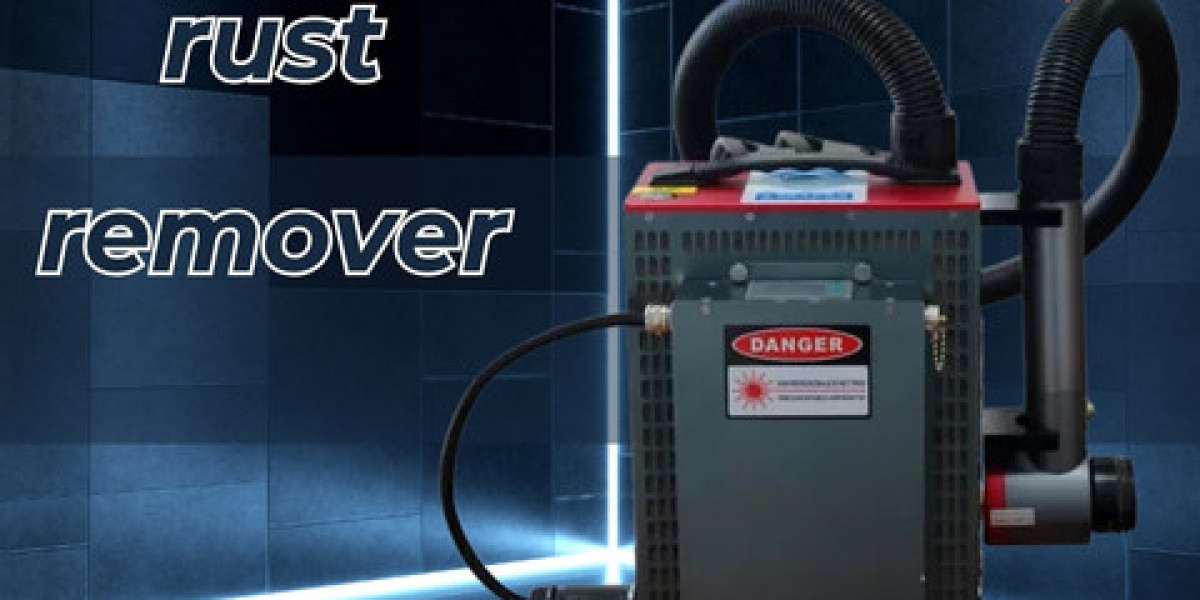In contrast, a laser rust remover has emerged as one of the most efficient and innovative solutions, capable of addressing rust and contamination challenges with precision and consistency. Industries ranging from automotive to aerospace are adopting this technology to maintain equipment, extend the lifespan of tools, and ensure compliance with increasingly strict quality standards.
Understanding the Laser Rust Remover Technology
A laser rust remover operates by directing a high-energy laser beam onto the surface of a metal component. When the beam interacts with rust, paint, or other contaminants, it rapidly heats and vaporizes them, leaving the underlying material intact. This process is non-contact, meaning no abrasive tools or harsh chemicals come into play, which helps preserve the integrity of the base material.
The principle behind this technology lies in the difference in absorption rates between contaminants and the metal surface. Rust and oxides tend to absorb laser energy more readily than the bare metal, which allows for selective removal. By adjusting parameters such as laser power, wavelength, and pulse duration, operators can fine-tune the cleaning process for different materials and levels of contamination.
Applications of a Laser Rust Remover in Industry
The versatility of a laser rust remover makes it a valuable asset across various sectors. In the automotive industry, it is used for cleaning engine parts, preparing metal surfaces for welding, and restoring vintage vehicles without damaging delicate structures. Shipyards and marine sectors rely on it to combat corrosion caused by saltwater exposure. In aerospace, where precision and safety standards are uncompromising, laser technology ensures that critical components remain rust-free without compromising their structure.
Even beyond heavy industries, laser rust removal has found its place in restoration work. Historical artifacts, sculptures, and monuments that have suffered the effects of time can be treated with controlled laser cleaning, removing surface rust while preserving delicate engravings or inscriptions. This adaptability highlights the wide-ranging relevance of the technology.
Why Industries Are Turning Toward Laser Rust Removers
In a time where efficiency and sustainability are becoming central to industrial practices, the laser rust remover addresses multiple demands simultaneously. It enables precise cleaning without consumables like sand or chemical solutions. This reduces the generation of secondary waste, aligning with environmental regulations and lowering overall operating costs. Moreover, because the process is automated and programmable, consistency is guaranteed, reducing the margin for human error.
Another significant reason behind the growing adoption is the minimal downtime associated with laser cleaning. Unlike mechanical methods that may require disassembly, a laser rust remover can often treat parts directly, saving time and resources. Companies striving to streamline their production lines find this feature particularly valuable, as it keeps operations moving without frequent interruptions.
How a Laser Rust Remover Enhances Surface Preparation
Surface preparation is a crucial step in many manufacturing and repair processes. Whether for welding, painting, or coating, a clean and properly prepared surface determines the durability and quality of the final product. Traditional cleaning methods sometimes leave residues or micro-abrasions, which compromise adhesion or cause premature wear.
With a laser rust remover, surfaces are cleaned thoroughly and evenly, ensuring strong adhesion for coatings and paints. For welding applications, removing oxides and contaminants helps achieve stronger, defect-free welds. By providing a uniform and residue-free finish, laser cleaning contributes to the reliability and performance of the final product, an outcome highly valued in precision-driven industries.
Operational Flexibility of a Laser Rust Remover
One of the remarkable aspects of a laser rust remover is its adaptability to different operating environments. Portable handheld units allow for on-site cleaning of large machinery, pipelines, or structural frameworks. This is particularly useful in industries like construction or shipbuilding, where transporting equipment to a workshop is impractical.
On the other hand, fully automated systems can be integrated into production lines, enabling continuous cleaning as part of the workflow. This automation ensures consistency and efficiency in high-volume operations. The flexibility between handheld mobility and stationary automation makes the laser rust remover suitable for both small-scale workshops and large industrial facilities.
Safety Considerations in Using a Laser Rust Remover
Although laser technology is precise, it does come with safety requirements. Operators must use protective gear, such as laser safety glasses, and follow standardized safety protocols to avoid accidental exposure. Modern systems are designed with built-in safety features, including shields, interlocks, and sensors that automatically halt the laser if unsafe conditions are detected.
By adhering to safety guidelines, industries can take full advantage of the technology while ensuring operator well-being. The integration of these safety features also reassures organizations that adopting laser cleaning will not compromise workplace standards.
Environmental Role of a Laser Rust Remover
Sustainability is no longer optional; it is a core requirement for many industries under pressure to meet regulatory and social expectations. A laser rust remover contributes positively by eliminating the need for chemical rust removers, which often contain hazardous substances. Furthermore, since the process produces minimal secondary waste—mostly dust and vapors that can be filtered—it reduces the burden of disposal and environmental pollution.
This eco-friendly profile makes the laser rust remover a forward-looking choice for industries aiming to reduce their carbon footprint and align with global sustainability goals. The technology’s balance between performance and environmental responsibility is a strong factor in its growing adoption.
Cost-Effectiveness Over the Long Term
Initial investment in a laser rust remover can be significant compared to traditional cleaning equipment. However, over time, the cost-effectiveness becomes evident. With no need for consumables like sand, brushes, or chemicals, ongoing expenses are reduced. Additionally, the durability and low maintenance of laser systems mean fewer replacements and repairs.
For companies focused on long-term efficiency, this translates into substantial savings. The ability to minimize downtime, reduce waste, and achieve consistent results makes the investment worthwhile. As more businesses look at overall lifecycle costs rather than upfront expenses, the financial appeal of a laser rust remover becomes clear.
Final Thoughts
The laser rust remover has reshaped the way industries approach surface cleaning and maintenance. Its precision, adaptability, and eco-friendly profile set it apart from traditional methods, making it a solution aligned with the demands of modern manufacturing and repair. From automotive restoration to aerospace maintenance, its role continues to expand as industries seek efficiency and sustainability.
By investing in this technology, organizations not only ensure cleaner and longer-lasting equipment but also position themselves at the forefront of innovation. The laser rust remover is not just a cleaning tool—it is a step toward the future of industrial maintenance and surface preparation.








